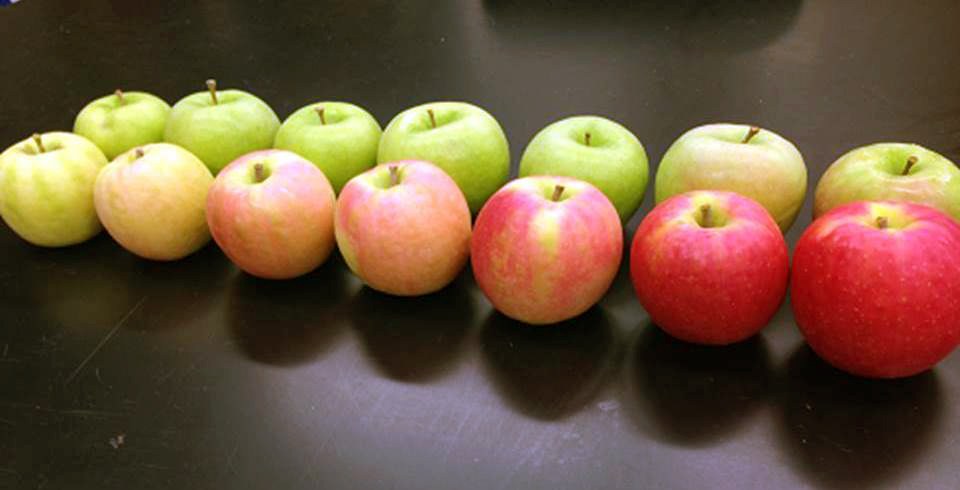Routine measurements of fruit starch levels, ground color and other maturity indices allow growers to make improved decisions about optimum harvest dates for long-term storage. During August through the end of October, 2017, this site will be updated weekly with both tables and photos that demonstrate progressions in apple maturity.

The Mid-Atlantic apple industry is going through a number of dramatic changes due to the planting of high density orchards with newer cultivars. These transitions, coupled with climate and weather changes, make it difficult for growers to predict optimum fruit maturity for long-term storage.
To track developments in physiological maturity, we will measure starch pattern, firmness, soluble solids, fruit size, % red color and ground color changes (visually and with a Delta A meter). The cumulative data will be presented here, and summaries of Starch Pattern Index and Delta A values will be posted each week at Fruit Times. The starch index measures the loss of starch in the flesh, while Delta A values are being evaluated as a measure of changes in ground color.
Our working hypothesis is that ethylene--sometimes referred to as the fruit ripening hormone--increases as fruit mature, leading to the coordinated ripening of apples. Ethylene initiates new enzyme production in fruit that affects visible attributes like surface color and ground color, as well as hidden attributes like starch pattern index, flesh firmness and soluble solids.
The project is supported by the State Horticultural Association of Pennsylvania Research Committee and is a cooperative effort of University of Maryland Extension and Penn State Extension.
Subscribers to the electronic version of Fruit Times will receive the weekly reports by emails easily read on a smart phone. If you receive the paper copy of Fruit Times, visit your library for the weekly updates that will be posted at Penn State Extension Tree Fruit Production. To sign up for electronic updates, visit Subscribe to Our Email List.
For more information contact
- Christopher S. Walsh, Professor of Pomology, University of Maryland
- Tara A. Baugher, Extension Educator, Adams County Cooperative Extension

